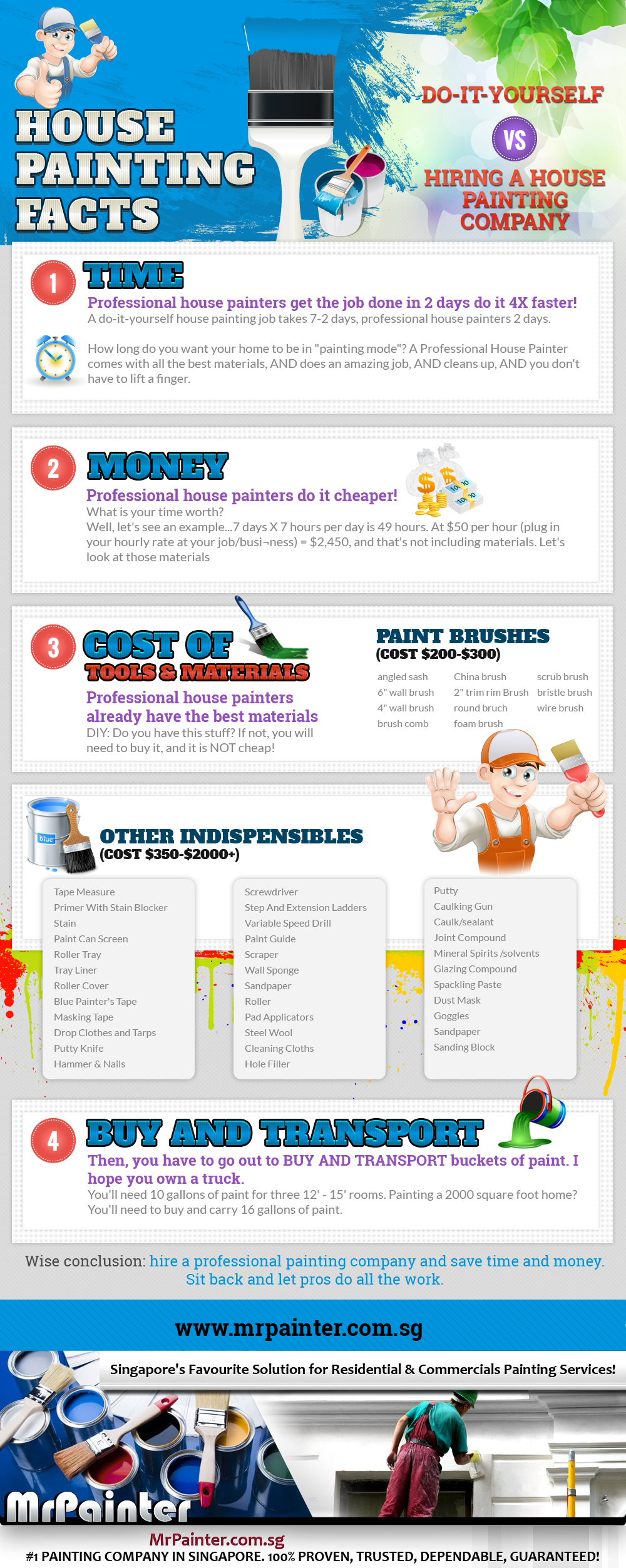Understand How Weather Condition Impacts Commercial Painting Projects And Find Vital Methods To Navigate Unforeseeable Problems For Optimum Results. What Will You Learn Following?
Understand How Weather Condition Impacts Commercial Painting Projects And Find Vital Methods To Navigate Unforeseeable Problems For Optimum Results. What Will You Learn Following?
Blog Article
Staff Writer-Borg Flores
When you're managing a commercial paint task, you can not neglect just how weather plays a critical function in your success. Factors like temperature level, humidity, and wind can either improve or threaten your initiatives, affecting whatever from application top quality to security on the job site. You might think you can repaint anytime, yet the fact is that particular problems can bring about pricey hold-ups or inadequate surfaces. Understanding these elements is vital, but what particular approaches can you carry out to make certain optimal results in the middle of unpredictable climate?
Temperature Level and Paint Application
When it pertains to industrial paint, temperature plays a vital duty in exactly how well the paint sticks and dries. If you're intending a project, watch on the temperature range advised by the paint supplier. Preferably, you want to work within that range for optimum outcomes.
When temperature levels are too reduced, paint can end up being thick and more challenging to apply, bring about uneven protection. You might locate yourself struggling with brush strokes or roller marks that simply will not vanish.
On the other hand, heats can create paint to dry too swiftly. This can result in issues like breaking or peeling off, as the paint does not have sufficient time to bond appropriately to the surface area.
If it's also hot, take into consideration arranging your help cooler components of the day, such as early morning or late mid-day.
Moisture and Complete Top Quality
Humidity significantly affects the surface quality of commercial painting jobs. When moisture degrees are high, wetness airborne can disrupt the drying out process of paint. This can result in concerns like bad attachment, irregular coatings, and increased drying times.
You might find that your paint takes longer to heal, which can postpone your job timeline.
On the various other hand, reduced humidity can also position problems. If the air is as well completely dry, paint can dry out also swiftly, preventing appropriate progressing and leading to a rough surface. You want your paint to move efficiently, and quick drying can hinder that, leaving you with an unacceptable surface area.
To achieve the most effective surface, aim for humidity levels in between 40% and 70%. This range allows for optimal drying out problems, making certain that the paint sticks well and degrees out appropriately.
Take into consideration using dehumidifiers or followers to manage wetness in indoor projects, and try to plan outside projects for days when humidity is within the excellent range. By taking note of moisture, you can improve the last look and longevity of your industrial paint task.
Wind and Exterior Problems
While you mightn't consider wind as a significant element, it can significantly affect the result of outside commercial painting tasks. High winds can disrupt your application process, triggering paint to completely dry too promptly. When repaint dries out too fast, it can result in an unequal coating or visible brush strokes.
You'll also encounter challenges with paint overspray, as wind can lug fragments far from the designated surface, resulting in squandered materials and prospective damage to surrounding locations.
Moreover, solid gusts can create security risks at work website. https://www.housedigest.com/964660/foolproof-tips-for-painting-with-dark-colors/ and scaffolding are extra prone to tipping in gusty problems, placing your team at risk. It's essential to monitor wind speeds prior to beginning a task. If winds exceed safe limitations, it's ideal to postpone your job to ensure a quality surface and preserve safety and security.
On calmer days, you can take advantage of the excellent conditions to achieve smooth, specialist results. Constantly check the weather forecast and plan accordingly.
Verdict
Finally, recognizing how climate affects industrial paint is vital for attaining the most effective results. By checking temperature, humidity, and wind problems, you can schedule your tasks throughout optimum times. This not just makes certain a smooth application however additionally improves the high quality of your coating. So, keep an eye on the projection and plan appropriately-- doing so will certainly conserve you time, cash, and stress while providing a specialist result every time you repaint.
